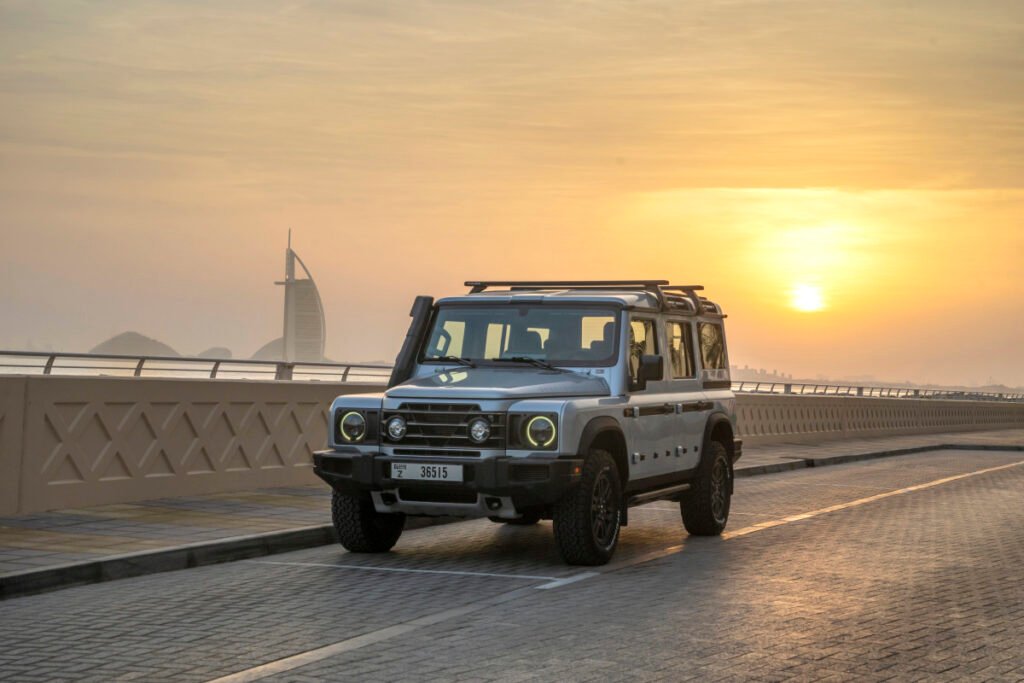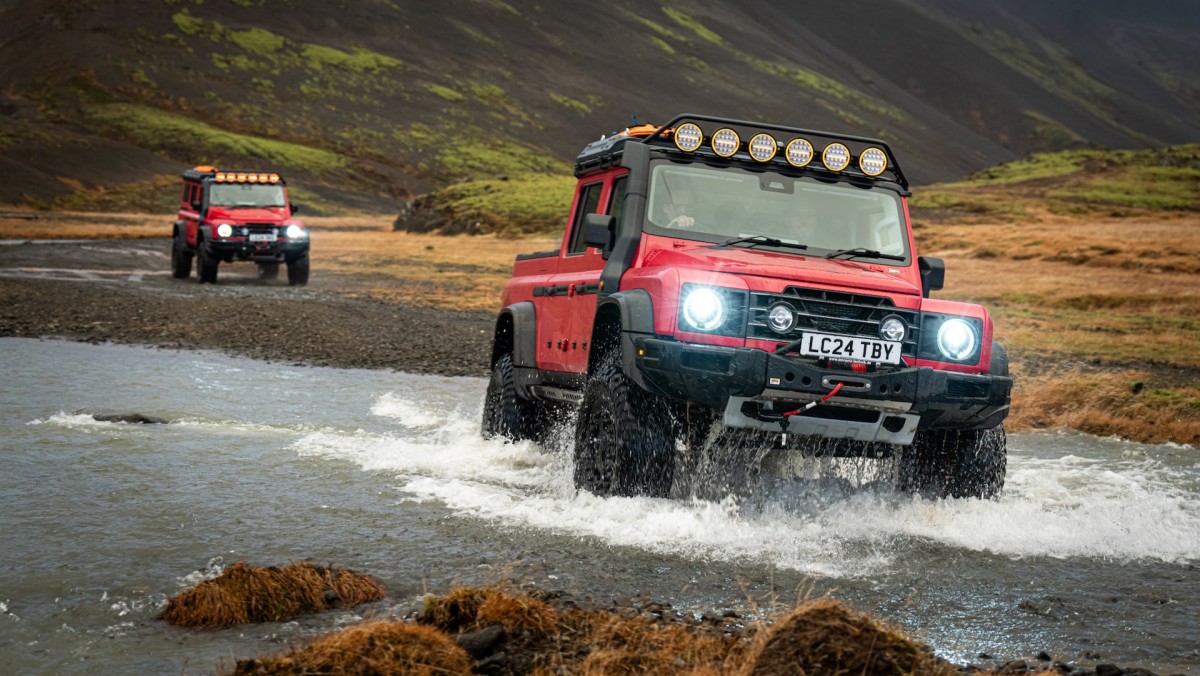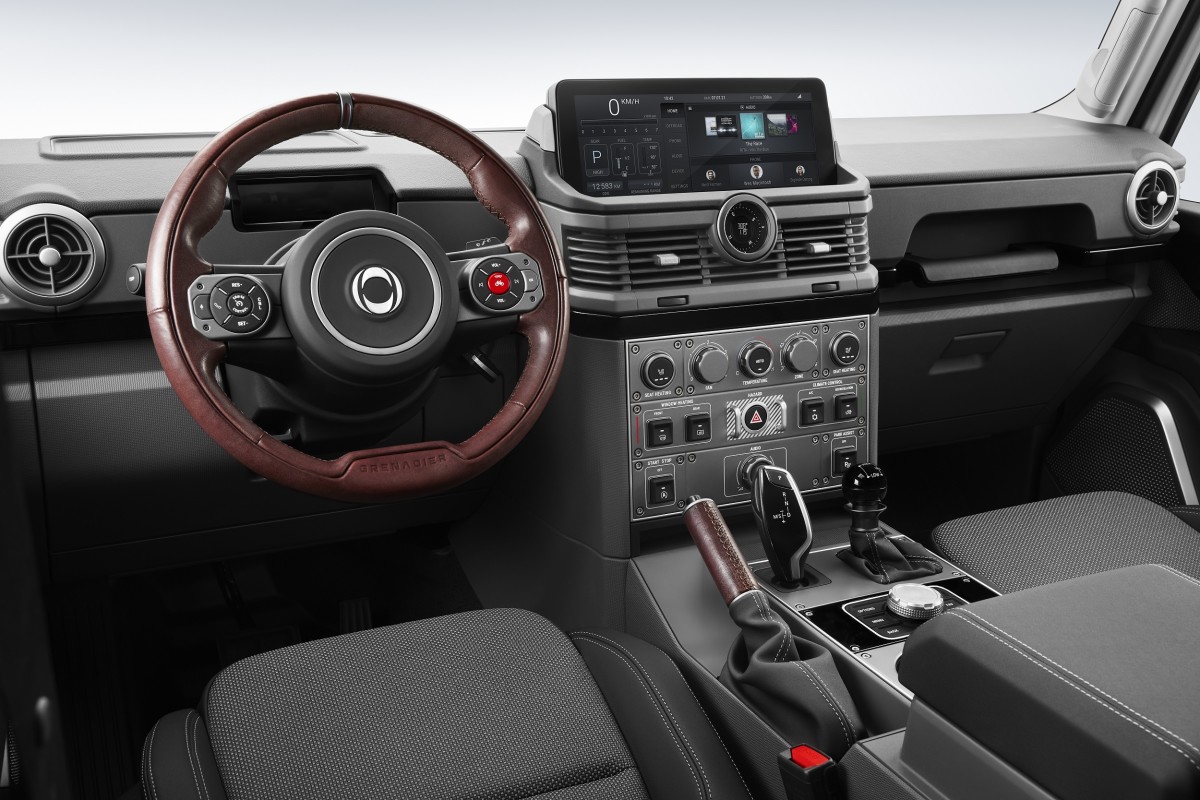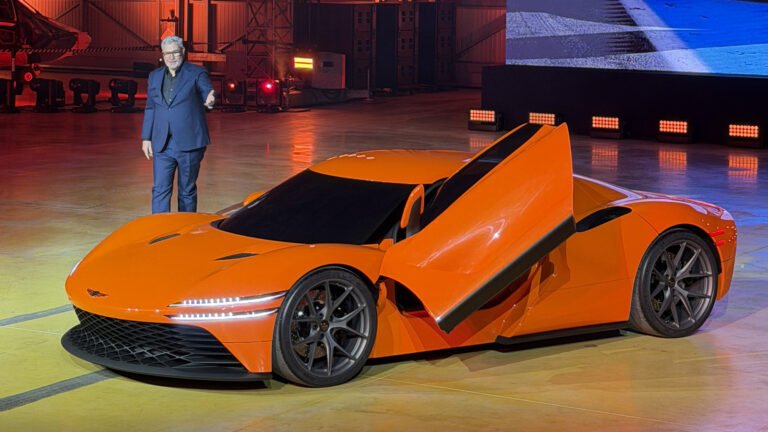
The coolest trucks on sale today are still struggling
Despite retro looks, smooth BMW powertrains, and tons of customizability, truck manufacturer Ineos Automotive is continuing to slide in the marketplace. The organization — a subsidiary of the much larger INEOS Group Limited, a chemical manufacturing company — has now been around for nearly ten years, having formed in 2017. The vision of the parent company’s chairman, Jim Ratcliffe, Ineos Automotive specializes in “stripped back, utilitarian, hard-working 4x4s engineered for modern day compliance and reliability.” In fact, the company’s own website claims Ratcliffe “identified a gap in the market.” Whether or not that gap was as large as anticipated, however, remains to be seen.
The latest bad news for the company comes in the way of “several hundred” job cuts. The cutbacks are far from localized, too, with Autocar reporting that trimming will occur in London (headquarters), Germany, and France. There are some positions safe, however. A spokesperson told Autocar that employees in the company’s France-based production site will not be affected. Of course, that’s likely to be of little comfort to those affected. The cuts come on the tail of two consecutive years of nine-figure losses, despite a “40% increase in sales” last year. We don’t have the numbers, though, as Ineos doesn’t release global sales figures.
Ineos
Ineos delivers on its vision, mostly
Ineos launched its Grenadier SUV in 2022, allegedly named for Ratcliffe’s favorite pub in London. Essentially built to replace Ratcliff’s own Land Rover Defender, the Grenadier was built with an eye towards reliability, durability, and ruggedness. After sourcing BMW powertrains, Ineos began building the Grenadier in France with hopes to one day build 25,000 trucks per year running at full capacity. For the 2025 model year, Ineos introduced a pickup version, dubbed the Ineos Grenadier Quartermaster. Both trucks feature standard off-road gear that would make even off-road enthusiasts blush, like an array of differentials and, of course, knobby tires.
Unfortunately, profitability might have been too small a portion of that vision
Despite making some admittedly attractive stuff, Ineos hasn’t achieved what anyone would call “mainstream adoption.” Of course, with production goals sitting around 25,000 trucks per year, that was arguably never the goal. But even “modest success” seems to be elusive for the still fledgling automaker. Ineos has sold approximately 233 trucks in the first ten months of the year, according to Autocar, although that figure excludes commercial purchases. Ineos claims the U.S. is the Grenadier’s biggest market, with around 60% of sales, but the going’s rough there, too. New U.S. tariffs have tacked on anadditional 12.5% onto the truck, on top of the already prohibitive 25% chicken tax. The result is a truck that, at least in the U.S., starts closer to six figures than not, making accessibility and affordability a clear problem.

It’s a real shame, too. Retro off-road rigs like the Grenadier are in right now — you’ll need to look no further than the current Defender, Ford Bronco, or Jeep Wrangler. The BMW powertrain — a familiar eight-speed auto mated to a turbocharged inline-six — provides a smoothness that none of those rivals come close to. Body-on-frame construction, solid axles, triple lockers, and hydraulically assisted recirculating ball steering make the Ineos twins arguably the most honest trucks on the market, chasing the adventure trend. They’re also the most analog vehicles you can buy in any segment, for that matter.
Final thoughts
Ineos might be down, but it isn’t out yet. The brand has looked forward, at one point considering electrification plans and also rebadging a Chinese small off-roader, the iCaur V27, as the Fusilier. The range-extended EV would sadly be a huge departure from the automaker’s focus on simplicity, but what’s a carmaker to do? The EU is still set to ban internal-combustion vehicles entirely in 2035. As CEO, Lynn Calder wisely stated, “We’re too small to spend huge amounts on product development to then find that we can’t produce it, we can’t sell it, in key markets.”


